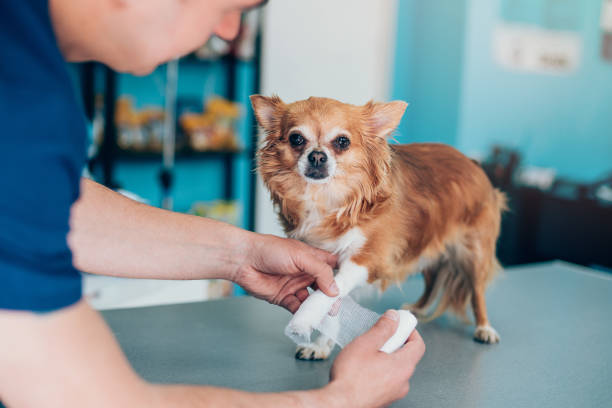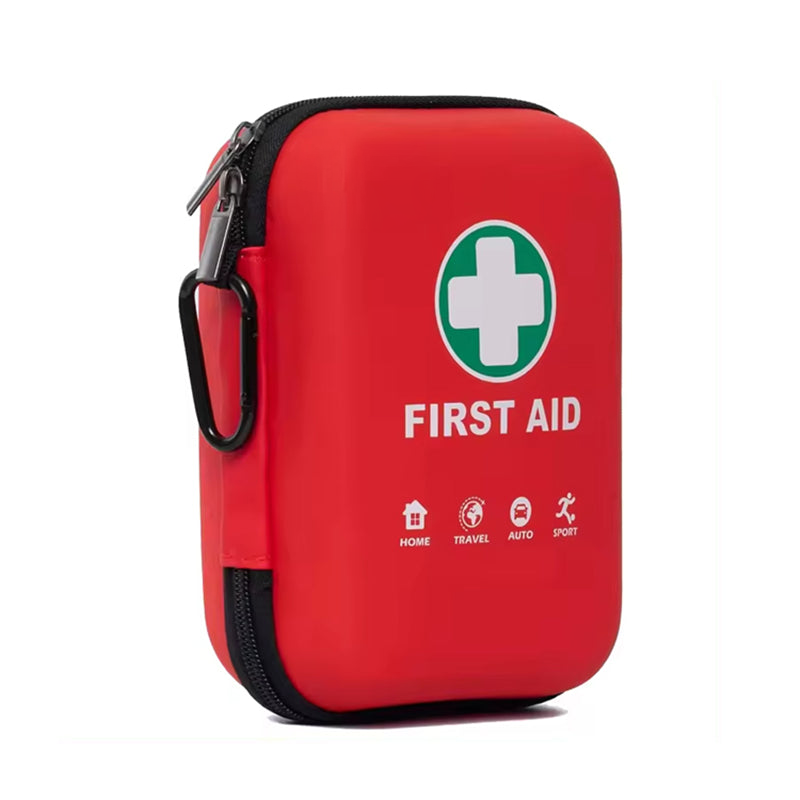Common Pet First Aid Situations

External hemorrhage
First of all, the pet wound around the hair removed clean, to reveal the skin below the wound, the use of saline on the wound cleaning, there are dirty things to pick out, and then use hydrogen peroxide to disinfect the wound treatment, then you can use drugs on the pet wound care. After the wound is taken care of, it is recommended that the dog's wound be bandaged and fixed with clean gauze. In order to ensure that the bandage does not fall off easily, you can also choose a self-adhesive bandage to make the bandage more easily. Instead of sticking to the skin or fur, these bandages are made of a material that applies pressure while reducing the chance of cutting off circulation.
Introduction of self-adhesive bandages

Internal hemorrhage
When internal bleeding occurs, these worrisome symptoms may be present.
- The color of the eyelids and gums, if pale.
- Stomach bleeding, examine the pet's feces, if the feces appear dark black and mixed with blood.
- Pay attention to the pet's behavioral state. When internal bleeding occurs, they will usually show a loss of spirit, loss of appetite, barking becomes muffled and weak, and may even vomit blood.
Heat stroke
Not only do people get heatstroke in the summer, but pets can also get heatstroke in hot weather or while playing, and in severe cases, even heatstroke. In severe cases pets can also suffer from heatstroke. Pets with heatstroke will show symptoms such as drooling, panting rapidly, irritability, difficulty breathing, and wobbly walking. Severe heatstroke can lead to shock.
Protective measure
- Bring plenty of water for your dog when you are out and about and hydrate from time to time. Adequate water is a good way to prevent heat stroke.
- Never leave your pet alone in a sedan when you take it out.
- Higher weight pets should pay attention to lose weight, because Higher weight pets in the heat of high heat production, more likely to heat stroke.

Poisoning
Poisoned pets are usually weak, painful, salivating, vomiting, diarrhea, convulsions, and fainting.
There are two scenarios
If the pet has lost consciousness, go to a veterinarian as soon as possible and carry the suspected poison and its package with you to determine the type of poison and to treat the symptoms.
If the poisoning is due to the pet's body surface being stained with toxic substances (such as insecticides, paints, or other irritants), the owner should clean its body surface so that the pet will not lick into these substances again to aggravate its condition.
Epilepsy
Symptoms of epilepsy usually include salivation, incontinence, muscle tonus, and loss of consciousness.
When this happens remove any potentially hazardous items within the pet's range of motion and use a blanket as a cushion and protection.
Be careful not to try to stop an animal with epilepsy to avoid unnecessary attack and injury.
Lights can be turned off first and silence maintained to minimize stimulation of the pet.
Whenever possible, record the duration of your pet's seizure, which usually lasts 2-3 minutes. You can contact the hospital to prepare for medical attention during this process.
If you experience a seizure that lasts longer than 5 minutes, the pet may have breathing problems and you will observe a purple tongue - a sign of oxygen deprivation. This is very dangerous and the pet should be wrapped in a blanket or large towel for immediate medical attention.
If your pet has a history of epilepsy, treatment is recommended and keep some Valium at home, and be sure to have your vet show you how to use the medication to save your life.
Finally, it is recommended that pet people can always have a pet first aid kit at home, not only to deal with external bleeding and heat stroke, but also to deal with other emergencies.
